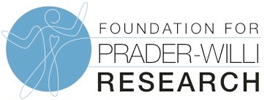 Thanks to nearly 2,000 participants completing a collective 61,795 surveys, the Global PWS Registry continues to be a vital resource for the PWS community—adding to our body of knowledge, improving how we care for our loved ones, and helping inform and accelerate clinical trials.
Thanks to nearly 2,000 participants completing a collective 61,795 surveys, the Global PWS Registry continues to be a vital resource for the PWS community—adding to our body of knowledge, improving how we care for our loved ones, and helping inform and accelerate clinical trials.
In celebration of 10 years of the Global PWS Registry, we’re highlighting 10 key learnings made possible by your participation and data contributions.
Each of these insights brings us one step closer to better treatments and improved quality of life for people with PWS and their families.
1. G-tubes have a 25x greater risk of serious complications than NG-tubes in infants with PWS.
Most babies with PWS require a feeding tube due to feeding difficulties and/or poor weight gain. Among Registry participants who completed the Feeding Tube Survey, minor complications (like skin irritation or clogged tubes) were common with both NG and G-tubes—but severe complications were more frequent in those with G-tubes.
In fact, 32% of babies with G-tubes had a serious complication, such as significant skin infections or the need for surgical repair for persistent leakage at the tube site.
Read more about feeding tube risks >>
2. As people with PWS get older, more of their friends also have special needs.
Relationships are important at every stage of life, and individuals with PWS are no different. Interestingly, the Registry data shows that 60% of people with PWS ages 16 and older report that all or most of their friends also have special needs.
This may reflect a preference for friendships with people who have similar experiences or communication styles, which may make social interactions more comfortable and satisfying.
Explore the blog on friendships in PWS >>
3. Disrupted sleep patterns in people with PWS are associated with increased psychiatric and behavior challenges.
Excessive daytime sleepiness (EDS) is common in people with PWS, reported in 55% of individuals in the Global PWS Registry who completed the Sleep History Survey.
Those with EDS were more likely to experience psychiatric concerns such as anxiety, depression, and even psychosis.
Read more about sleep and behavior in PWS >>
4. Growth hormone use drops dramatically in adulthood due to access barriers.
Growth Hormone has many benefits for adults with PWS including improving body composition and muscle strength, normalizing IGF-1 levels and improving cognitive function.
Unfortunately, insurance companies frequently deny coverage for GH therapy in adults with PWS based on inadequate testing criteria. Within the Global PWS Registry, fewer than 20% of adults with PWS over the age of 24 are using growth hormone.
5. Strabismus is common in PWS, and repeat surgeries are not uncommon.
Among participants in the Global PWS Registry who completed the Vision Survey, 40% reported a diagnosis of strabismus—a rate much higher than in the general pediatric population, which ranges from 2.1% to 3.6%.
Most individuals with PWS who have strabismus are diagnosed before age 5. Importantly, 10.1% of those who underwent strabismus surgery required a second or even third procedure later on.
6. The risk of blood clots (thrombosis) is higher in people with PWS.
Among 883 individuals who completed the Thrombosis Risk Survey, 3.6% had experienced a blood clot—a rate notably higher than the general population (<1%).
The risk increased with age, with 8% of individuals age 30 and older reporting a history of thrombosis.
Learn more about blood clot risk in PWS >>
7. Group home wait times can be long, while PWS-specific settings lead to higher satisfaction.
Planning for housing is a major concern for many families. Registry data shows that 40% of individuals ages 25–39 live outside the family home, and this rises to 59% for those age 40+.
However, 30% of families reported waiting over a year to access a group home. Encouragingly, families tend to report greater satisfaction when their loved one lives in a PWS-specific setting, where staff are trained to meet their unique needs.
Read more about adult living situations >>
8. Most people born after 1990 were diagnosed by age 1—but gaps still exist.
Early diagnosis allows for early intervention, which can significantly improve developmental outcomes.
Among Registry participants born between 1990 and 2021, 66% were diagnosed by 1 month, and 85% by 1 year. Importantly, 15% are still receiving a later diagnosis, highlighting the importance of advancing newborn screening for PWS.
In addition, the majority of Registry participants are in the United States (~75%). Average age of diagnosis likely varies by country due to diagnostic practices and accessibility.
See the diagnosis timing study >>
9. The stress of caring for a person with PWS is strongly correlated to the severity of hyperphagia.
Hyperphagia is a life-long concern for individuals with PWS and their caregivers. A study through the Global PWS Registry found that caregiver burden increases as the person with PWS gets older and as hyperphagia increases.
While the findings from this study may not be surprising to PWS families and caregivers, documenting this in the scientific literature is important for advocacy efforts with pharmaceutical companies and regulatory agencies, like the FDA.
Read the blog on hyperphagia and caregiver burden >>
10. Higher HQ-CT scores in people with PWS are linked to obesity and weight gain, as well as increased efforts by caregivers to create food-safe environments.
Data from the widely used Hyperphagia Questionnaire for Clinical Trials (HQ-CT) show that individuals with higher scores are more likely to be overweight or obese.
In addition, caregivers are working hard to increase food security measures for their loved ones as food seeking behaviors increase.
Explore the latest HQ-CT findings >>
Thank You for 10 Years of Impact
Every learning shared here is thanks to families like yours. Your time, honesty, and continued commitment to the Registry have helped build a deeper, more accurate picture of life with PWS.
This milestone belongs to the entire PWS community. Together, we're advancing science and improving care—one survey at a time.








